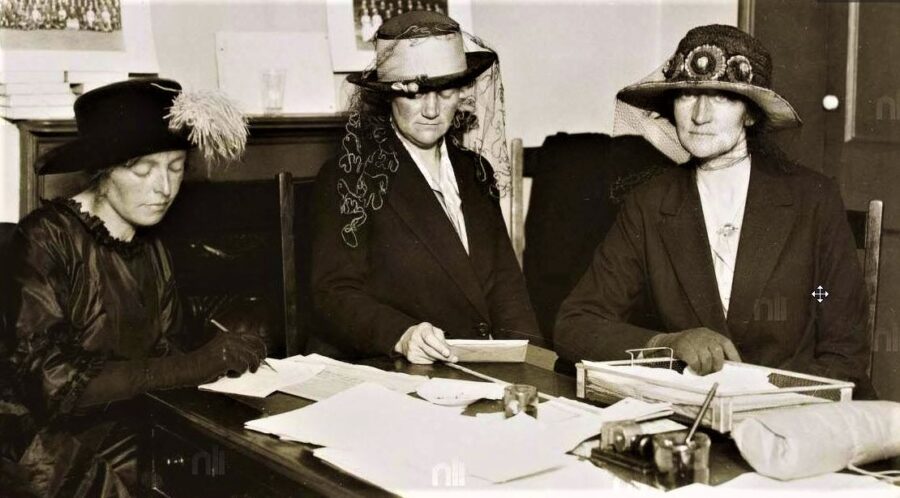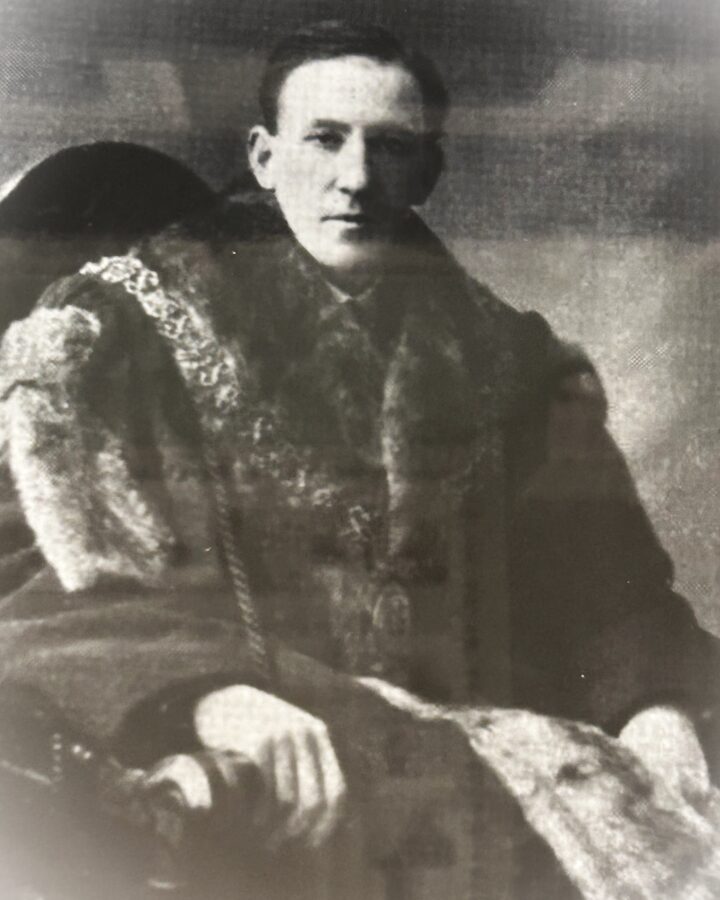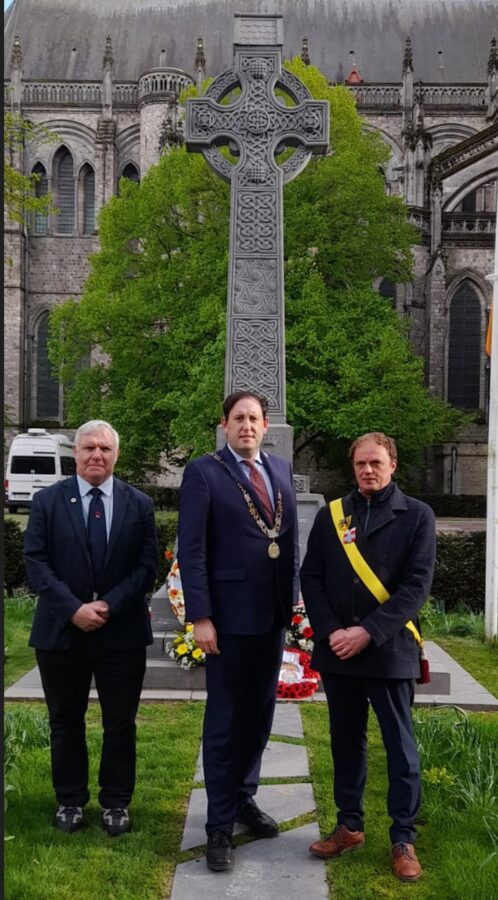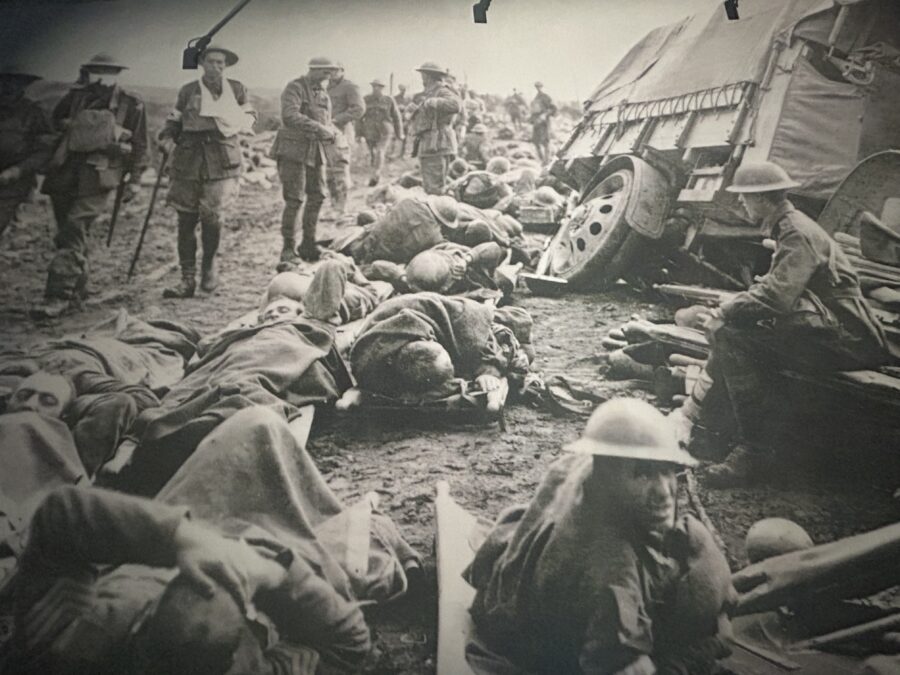
Kieran’s Our City, Our Town Article,
Cork Independent, 3 April 2025
Making an Irish Free State City – Ms MacSwiney’s Letter to the Editor
The decision in mid-October 1924 by Cork Corporation’s Public Works committee to give permission to advance a Great War Memorial on the South Mall brought debate outside into the public realm. Much historical material survives on the opinions of those individuals for the memorial and on those individuals completely against the memorial, with all opinions made against the varied meanings of such a memorial in an evolving political landscape in Cork.
In particular on the against side and highlighting the evolving political context of the time is Eitne or Annie MacSwiney, sister of Lord Mayor Terence MacSwiney. She sent a letter to the Cork Examiner outlining her views. The letter was published on 21 October 1924 and signed “Eitne McSuibne, Ig Corcaighe, 20 October 1924”.
Opening her perspectives, Eitne alludes to the discussions where her brother’s name was brought into the debate on the war memorial. She notes that she had no desire to enter into discussion with people who wish to “erect memorials to England’s victories”, but neither had she any desire to see her brother’s name “dragged into the discussion”.
The first aspect, to which her attention was drawn to, was an argument by a member of Cork Corporation, who mentioned he had a right to speak and vote for such a memorial as he had walked in Terence MacSwiney’s funeral.
Eitne writes that the less said about those who walked in her brother’s Terence’s funeral the better. She points to the people of Cork and their memory of a “most impressive display” at the funeral – especially from the dignitaries of the Church – from archbishops to priests, who walked in all the mourning robes of the Church. In addition she writes that on the first anniversary of his death when the public bodies and citizens filled the Cathedral at a Solemn Requiem Mass, where the Bishop of Cork presided. However, Eitne contrasts all of that with his second anniversary after the passing of the Treaty when some priests refused to pray for Terence in Cork churches. She writes; “What had changed in the two years? Surely not the dead Terence MacSwiney, nor the ideals for which he lived and died. So I repeat, the less said about those who walked in his funeral, the better”.
The second aspect Eitne draws attention to is the question of what there was no statue to Terence erected in the city. She notes that a memorial was projected, but that the project was stopped by his family after the Treaty was signed and voted on. She noted: “They felt, as felt all those who stood true to the principles for which the dead died that, until Emmet’s epitaph can be written, no monument should be raised to any of his successors; and assuredly not in a land whoso false sons took the oppressor’s guns to fight, at his dictation, against the freedom of their own land, and against those who were defending it. The best memorial to any of them, from Wolfe Tone to Denny Barry, is earnestness in the completion of the work they left us to do”.
The third aspect Eitne addresses in her letter is on the proposal of a British war memorial for Cork. She stresses the fact that Cork people all know many people who served England in the European war. However she argues in her opinion that those who went out to fight were “misled by false propaganda and by the cry of Freedom for small nations including many too who were driven into the ranks by the unemployment created for the express purpose of forcing them to enlist in England’s service”. She further notes: “No one casts any aspersion on them for the mistake they made, but it was a mistake which cost them and Ireland dear, and certainly their mistake cannot be a reason for erecting a British War Memorial in Cork…They left their own country, unprotected, at the mercy of England’s soldiers, whom their going set free to carry on oppression and suppression of every kind here. If that half-million had remained at home, England’s soldiers would have had to leave his country to take their places in the trenches”.
Eitne in her letter reiterates her opinion that some soldiers undoubtedly believed they were going to the frontline for Ireland’s future and its place as a small nation. However, she argues that “their going left the wives and children of Ireland at the mercy of the English garrisons that Irishmen saved from the trenches”. She noted: “Armistice Day was the 11th November, 1918. Let us ask what English soldiers were doing there from 1916-1918 while he was ‘fighting for Ireland’ in France. The victory for small nations was won in 1918. Let him ask himself what the English soldiers were doing from 1918 to 1921. What particular brand of Freedom burns your cities to the ground, drags your citizens out of bed and murders them in the dead of night, shoots prisoners, and executes men who dare to stand for freedom”.
Eitne continues to argue in her letter that any memorial raised to British soldiers is a memorial to England and in her view the citizens of Cork want no monument to England here. She highlights that she did not have thought it possible that even the Free State members of the Corporation could produce six men in favour of such a proposal. She is angered that the proposal is to place the memorial next to the National Monument on the Grand Parade.
Eitne concludes her letter by commenting on the funding of the memorial denoting that friends of the men who fell in France have collected some thousands of pounds for this memorial. She calls for the collected funds to be put to a better use by giving it to the families of the Corkmen whom they wish to commemorate, to be spent on the education of their children.
Eitne notes in her letter; “The fallen men must have sons and daughters who would be glad to study for some profession, or be trained in some business. It ought to be possible to start many of them in good careers in life out of the money raised for a British war memorial, and such careers would be a nobler memorial to their dead than a monument which, if it were ever allowed to go up, would only commemorate the fact that their fathers fell fighting England’s battles in France when England was carrying on here all the atrocities of which she accused the Huns”.
To be continued…
Caption:
1298a. Muriel MacSwiney, Mary MacSwiney & Eitne /Annie MacSwiney, late 1920 (source: Cork City Library).
April 2025 Historical Walking Tours with Kieran, All tours free, 2 hours, no booking required
Saturday 5 April, The Friar’s Walk Tour; Discover Red Abbey, Elizabeth Fort, Barrack Street, Callanan’s Tower & Greenmount area; Meet at Red Abbey tower, off Douglas Street, 1pm in association with the Cork Lifelong Learning Festival.
Sunday 6 April, Shandon Tour; explore Cork’s most historic quarter; meet at North Main Street/ Adelaide Street Square, opp. Cork Volunteer Centre, 1pm, in association with the Cork Lifelong Learning Festival.
Saturday 26 April, The Cork City Workhouse Tour; learn about Cork City’s workhouse created for 2,000 impoverished people in 1841; meet just inside the gates of St Finbarr’s Hospital, Douglas Road, 1pm.
Sunday 27 April, Fitzgerald’s Park: The People’s Park Tour, from stories on the Mardyke to the Cork International Exhibition, meet at the band stand, 1pm.



